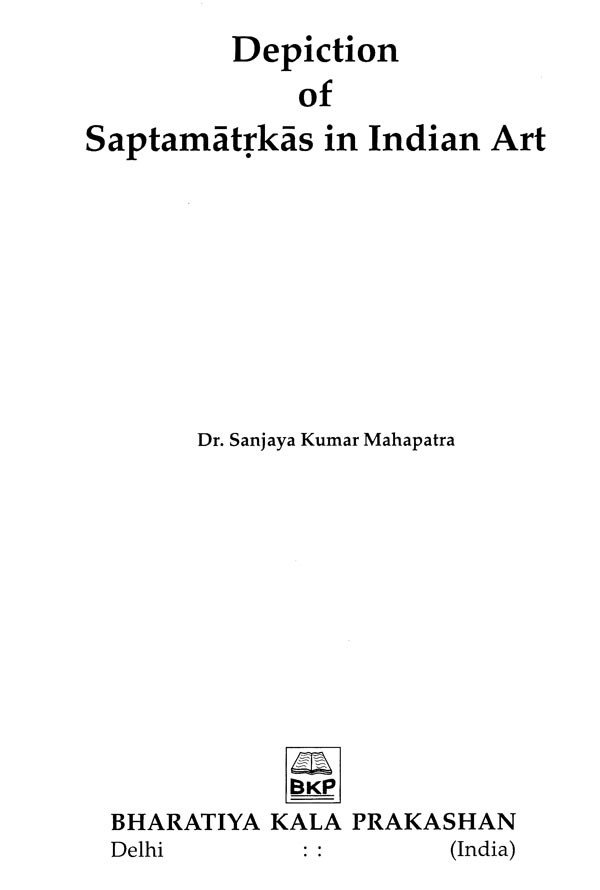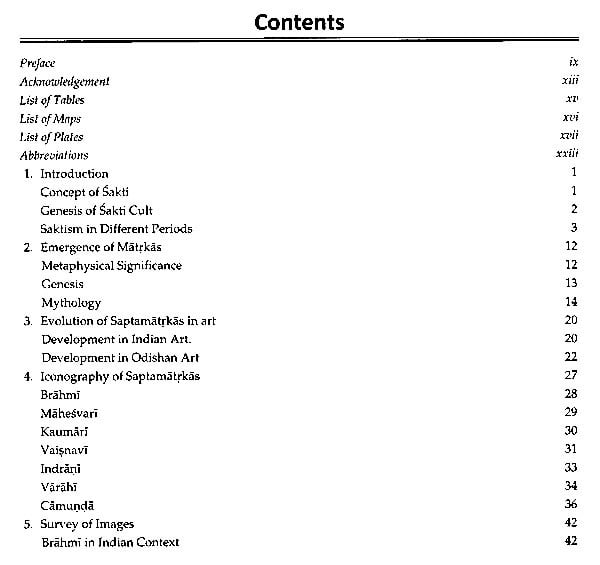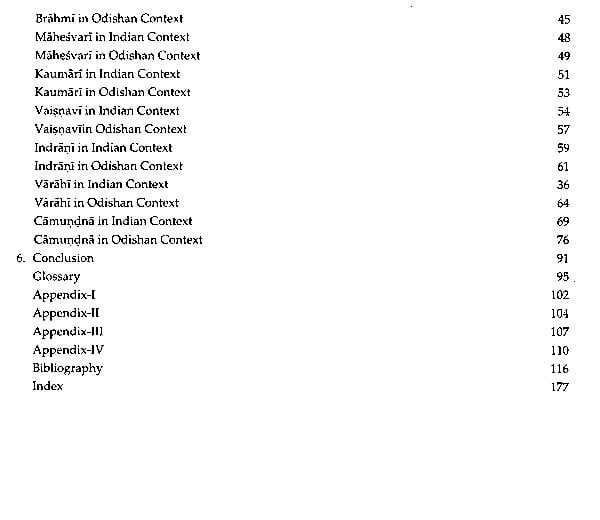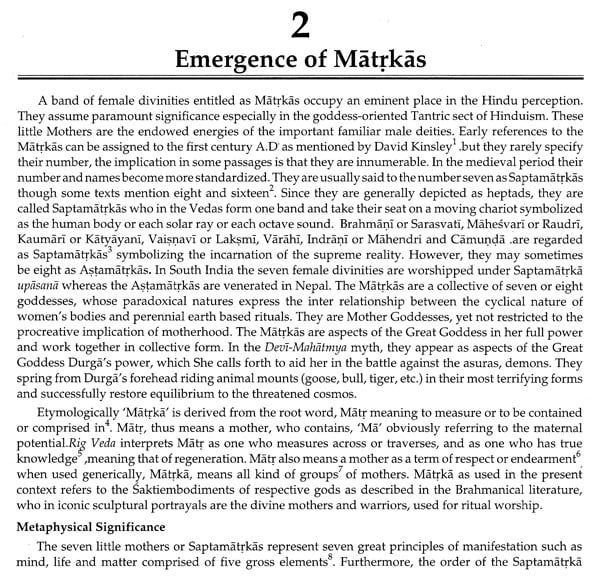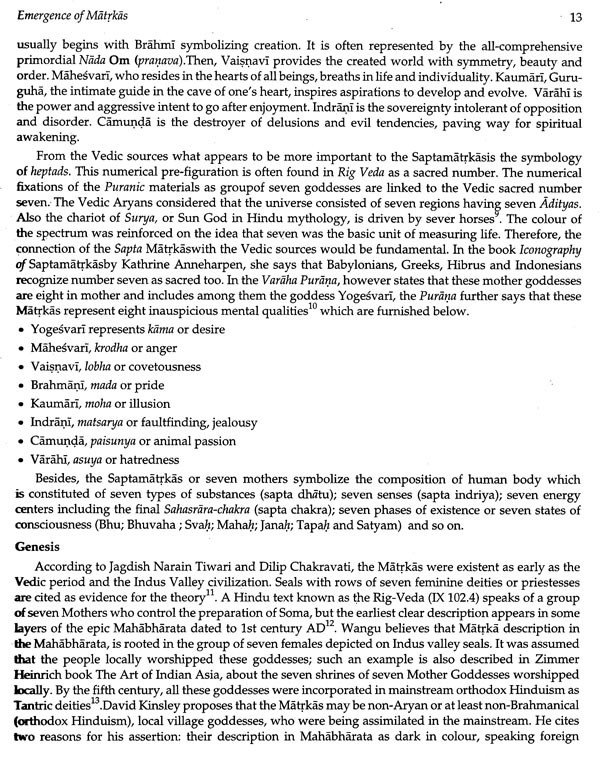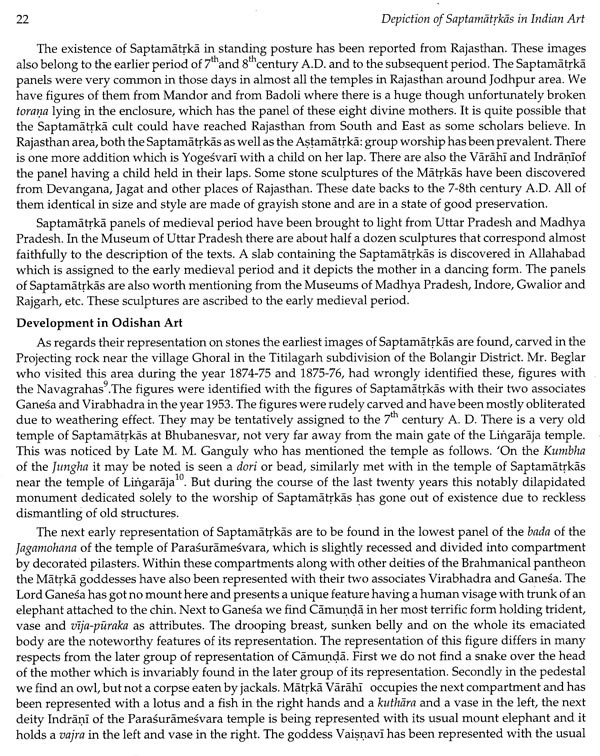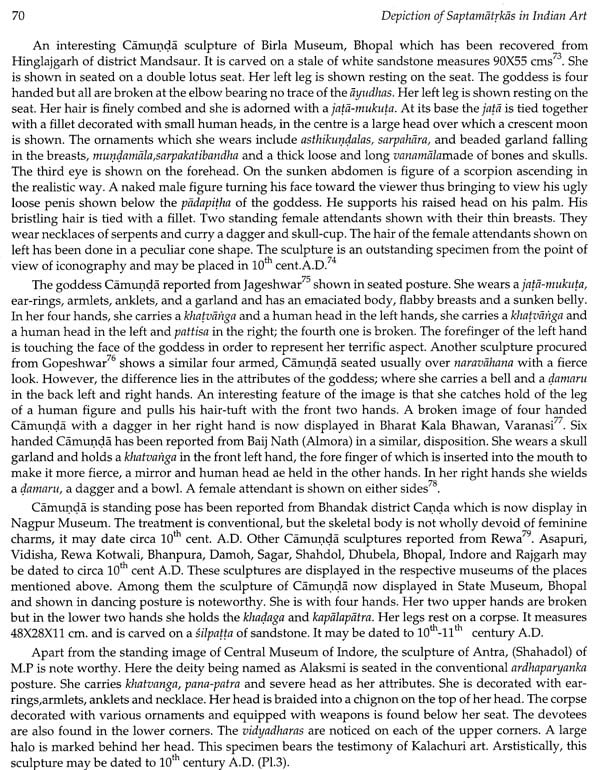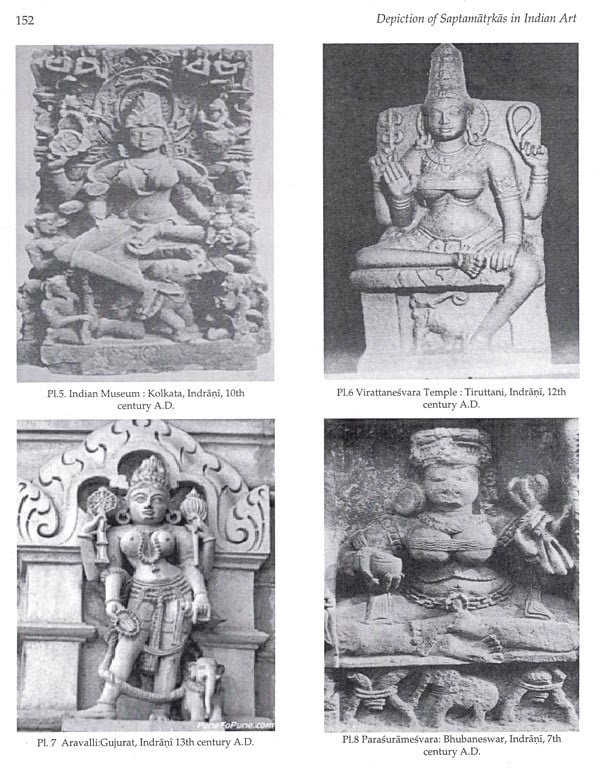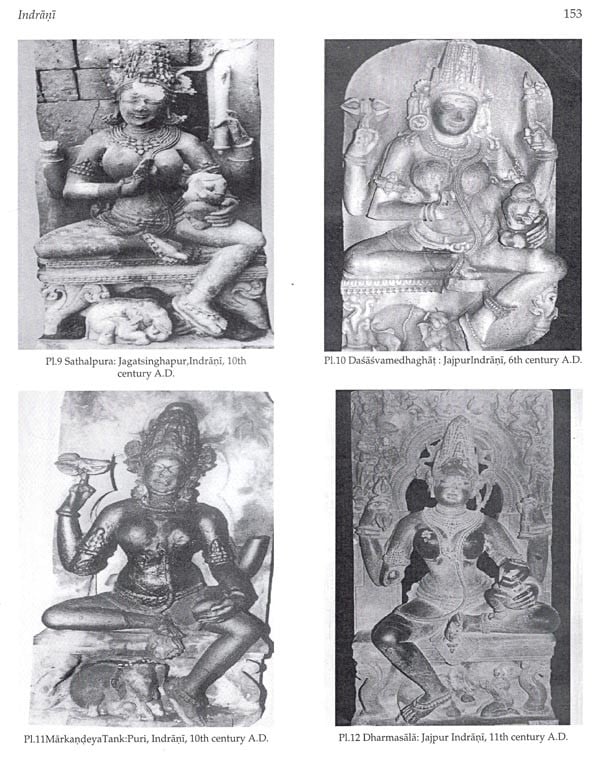
Depiction of Saptamatrkas in Indian Art
Book Specification
| Item Code: | AZE698 |
| Author: | Sanjaya Kumar Mahapatra |
| Publisher: | Bharatiya Kala Prakashan |
| Language: | ENGLISH |
| Edition: | 2019 |
| ISBN: | 9788180904158 |
| Pages: | 206 (Throughout B/w Ilustrations) |
| Cover: | HARDCOVER |
| Other Details | 11.00x9.00 |
| Weight | 1.07 kg |
Book Description
A large number of Saptamätṛkā panels and images are noticed from our sub-continent ranging from Its century A.D.to 13th century A.D. Here the author presents rich and variegated pictures of the Seven Little Mothers which glorify the Art History of India highlighting the iconography of individual images with special reference to the Silpa and Tantric texts. He focuses on different depictions of Saptamātṛkā images. The book also incorporates the genesis of Sakti cult, sākta pithas of Odisha, origin and evolution of the Goddesses, survey of prominent sculptures found both in Odisha and other Indian States. The extensive field work and hundreds of the portrayal of the Saptamātṛkās have made this book colourful as well as the first of its kind. The work abounds in photographs revealing the variety forms of the Goddesses which will definitely for scholars and particularly those architecture and pre odisha in particular and that of india general.
Dr. Mahapatra is well versed in Yoga, Tantra and Astrology and has got the credit to publish seventy articles in the different national and state journals which brought him state and national repute in recognition. His valuable books "Mahiṣāsuramardini in Art, Iconography and Cult Practices, Mahişäsuramardini:The Great warrior Goddess, Camuṇḍā in Mythology, Art and Iconography, The Khakhara Temples" and The Goddess Vārāhi are well appreciated by the scholars. Besides, he has co-edited the two volume k "A Bouquet of Indian Heritage, rch and Management". His edited "Social History of Orissa in 19th ry" is also a unique reference work. he attainment of spiritual goal and blissful state he was initiated into e path of Kriya Yoga in 1988.
The antiquity of Sakti cult in India dates back most probably to the 3 millennium BC on the basis of terracotta figurines discovered from the Harappan sites and the historic rock shelters where the Sakti is manifested in triangular genital forms or in the forms of fecundity and fertility. She was invoked and adored in the names of Ura, Aditi, Sri, Sarasvati etc in the Vedic age while Durga. Candika, Saptamätrka, Yoginis, Camunda etc in the Epic and Mahabharata periods. She is Mahakali, Mahilaksmi and Mahisarasvati as delineated in the Markandeya Purana. Even modern Indian saints like Ramakrina Paramahamsa and Sri Aurovinda have invoked this Sakti in the shape of Divine Mother. She is also regarded as the Maya and Prakrti by the Vedantins. Being the primordial energy she creates, sustains and dissolves the universe. That is why since the dawn of civilization the worship of the Divine Mother crept into the spiritual and religious beliefs of mankind.
The Sakti cult occupies a pivotal position in the socio-religious life of Indian people. The paintings and engravings of the rock-cut art, the bisected triangles, the perforated stones in the rock shelters and the Yoni stone etc have not only strengthened the above statement but also provided the concrete materials to the scholars to prove the beginning of Sakti cult in India since the pre-historic period. Further, the primitive tree-worship is no doubt the early manifestation of mother-worship which reinforces the genesis of Sakti cult in India to a hoary past.
A band of female divinities entitled as Mätrkäs occupy an eminent place in the Hindu perception They assume paramount significance especially in the goddess-oriented Tantric sect of Hinduism. These little Mothers are the endowed energies of the important familiar male deities. Early references to the Mátrkás can be assigned to the first century AD as mentioned by David Kinsley. But they rarely specify their number, the implication in some passages is that they are innumerable. In the medieval period heir number and names become more standardized. They are usually said to the number seven as Saptamatrkäs though some texts mention eight and sixteen. Since they are generally depicted as heptads, They are called Saptamatṛkäs who in the Vedas form one band and take their seat on a moving chariot ymbolized as the human body or each solar ray or each octave sound.
The word Sakti is derived from the root "Sak' meaning the capacity to have power and to perform It indicates both capacity and activity. It may also be applied to any form of action like seeing, hearing, smelling etc. These are all powers of activity which are ultimately reducible to the primordial energy (Adya-Sakti) from where every other form of power proceeds. Further, Sakti may be conceived to be the personification of universal energy in abstract. She resides in the macrocosm and microcosm. While all the forms of activity in the perceptible world are the manifestation of the macrocosmic forms of Sakti, in the microcosmic form she resides dormant in the human body at thebottom of the spinal columes (muladhara clunkra). The ultimate aim of Yoga sastras is to arouse it and carry it to the cerebrum (sahasrara chakra) for attainment of samadhi, the ever blissful state.
**Contents and Sample Pages**
